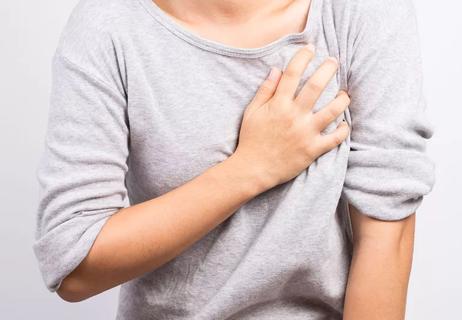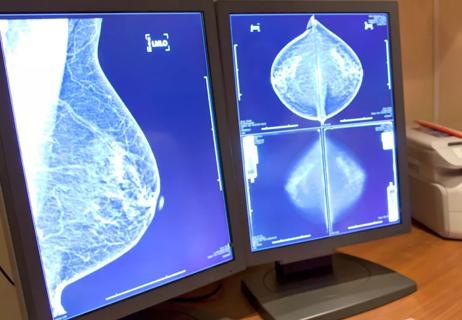Bacterial infections, breast abscesses and clogged milk ducts can all cause inflammation in your breasts

We often associate mastitis, or inflammation of breast tissue, with complications that get in the way of breastfeeding because of clogged milk ducts. Although that’s certainly a common cause of inflammation, you don’t need to be breastfeeding to develop inflammation in your breast tissue. And if you’re experiencing inflammation for long periods of time without treating the underlying cause, that inflammation can lead to further complications.
Advertisement
Cleveland Clinic is a non-profit academic medical center. Advertising on our site helps support our mission. We do not endorse non-Cleveland Clinic products or services. Policy
Internal medicine physician Lakshmi Khatri, MD, explains what causes non-lactational mastitis, how it’s treated differently from lactational mastitis and why you should seek medical care whenever you experience symptoms.
Mastitis is an inflammatory condition of the breast that often results from or leads to an infection. In non-lactational mastitis, inflammation is often caused by the compression or blockage of milk ducts and the swelling of surrounding breast tissue. This can happen for a few different reasons:
Advertisement
“Your skin is a barrier from infection, so if the skin is broken down for another reason, then it’s very easy for bacteria that live on top of the skin to infiltrate and cause an infection,” explains Dr. Khatri. “That would cause localized redness, heat, warmth and pain.”
Lactational and non-lactational mastitis can cause similar symptoms like pain, redness and swelling. But non-lactational mastitis often presents different symptoms like:
“Specifically, idiopathic granulomatous mastitis usually presents on the periphery of the breast farther away from the areola and central part of the breast,” clarifies Dr. Khatri.
The redness and pain that’s associated with non-lactational mastitis can also occur with inflammatory breast cancer. Although rare, inflammatory breast cancer occurs as a result of cancerous cells blocking lymph vessels — small hollow tubes that drain lymph fluid out of your breasts. These blockages can then lead to inflammation which can sometimes be mistaken for mastitis.
“Inflammation can happen in any scenario in which you’re blocking that lymphatic drainage,” says Dr. Khatri. “With inflammatory breast cancer, you can end up with redness of the skin, pain, and sort of an orange peel appearance where your pores are really obvious and the skin becomes really thick.”
Cellulitis is another condition that can be mistaken for mastitis because it’s an infection of the skin that can occur anywhere on your body, including your breasts.
“Cellulitis happens often because bacteria can penetrate the skin when there is a breakdown of the barrier,” she continues. “This is common with an underlying skin condition like eczema or with inflammation under the breasts from moisture.”
There are some things you can do at home to manage the severity of your symptoms when you have mastitis like:
But symptom management is only a small part of the solution when you have a breast infection.
“Unlike with lactational mastitis, where there are ways to mitigate it and resolve it without the need for antibiotics, in most cases with non-lactational mastitis, you’re going to need treatment of some sort,” states Dr. Khatri.
Advertisement
If you have periductal mastitis or breast abscesses, you’ll need to have those abscesses drained and will likely need antibiotics to help clear the infection. If you have IGN, you may need a biopsy to determine whether it’s mastitis or breast cancer that’s causing your inflammation.
Surgery may be needed in some situations when you have a significantly large abscess that needs to be drained.
“Surgery is used as a last resort,” she notes. “If it’s severe and painful enough, surgeons will take patients to the operating room for these procedures, but it’s often an outpatient surgery. Radiologists can use a needle to drain the fluid from inside the pocket of pus or abscess if there is one. Surgeons can also do it in the office by numbing the area and making a very small incision to release all of the pressure from that fluid.”
If left untreated, mastitis can lead to systemic issues with worsening symptoms like:
“If you’re experiencing these systemic symptoms, these are signs that indicate your mastitis may be significant enough that you’ll need IV antibiotics,” says Dr. Khatri.
Advertisement
Non-lactational mastitis isn’t something that will resolve on its own. More than that, it’s often confused with more serious conditions like breast cancer. If you’re experiencing any of the symptoms of mastitis, getting evaluated by a trusted healthcare provider as soon as possible is crucial in making sure you receive the appropriate treatment and that it’s actually mastitis that’s causing your symptoms.
“I wish there were some really easy home remedies for this, but that’s not the case for non-lactational mastitis,” says Dr. Khatri. “It’s an inflammatory condition and treatment needs to be tailored to the cause.”
Advertisement
Learn more about our editorial process.
Advertisement

Dry skin, eczema, allergies and infections can all cause itchiness — but in some cases, itching may signify a more serious health condition

A breast abscess feels like a hot, hard and painful lump — seek support from a healthcare provider at first signs of an infection

Any mass or abnormal area that you feel for more than three days should be checked out

It's a common complaint, but don't just ignore it

How to separate serious concerns from minor pain

This lengthy and portentous name doesn’t necessarily mean a scary diagnosis

These over-the-counter kits are 99% effective at identifying when you’re most fertile each month

Start having sex about 72 hours before ovulation, then at least every other day during your fertile window

Babies can get congested easily, but you can calm their cough by keeping them hydrated, using nasal drops and running a humidifier

Weight loss may cause loose, sagging skin and muscle loss to your rear

Several conditions, like vitiligo and fungal infection, can cause a loss of pigmentation, leading to white spots or patches on your skin